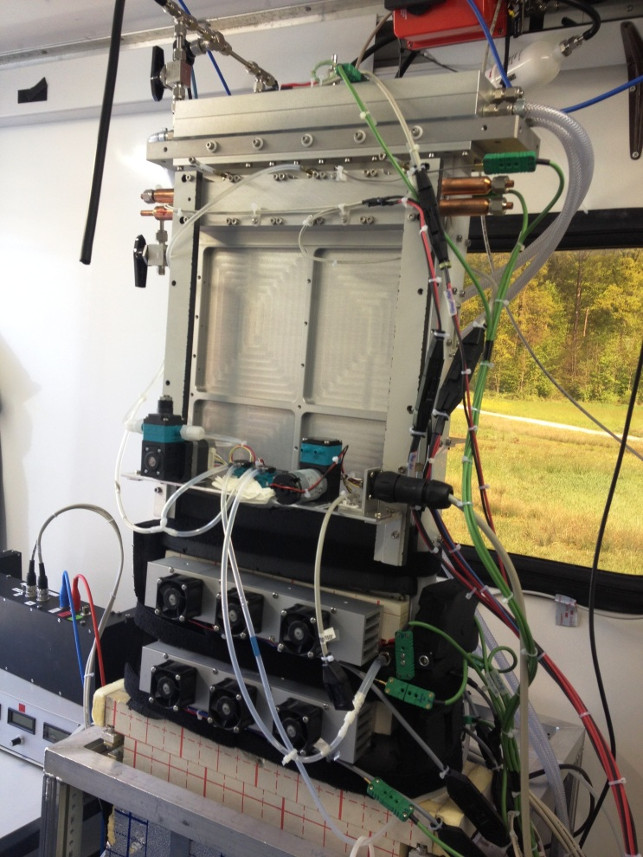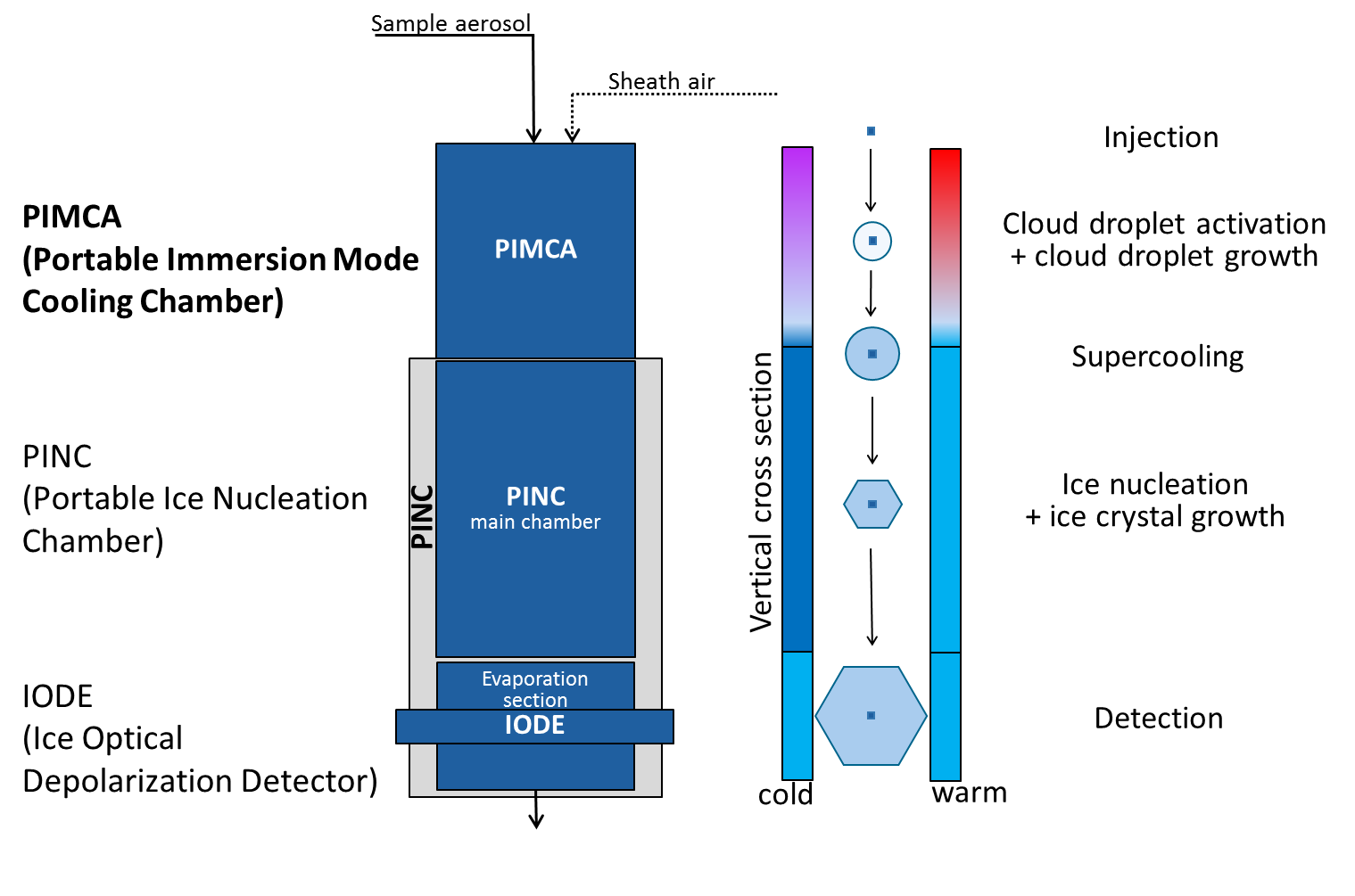PIMCA
Immersion freezing is an important process for ice cloud formation in mixed-phase clouds. This process is not understood sufficiently to accurately estimate the influence of mixed-phase clouds on radiation and climate. In particular in-situ atmospheric studies are needed to understand the ice formation processes of the ‘real atmosphere particles’, which in laboratories studies can only be simulated. Recently, we have developed an instrument to investigate immersion freezing of atmospheric particles that can be deployed in field studies as to measure the concentration of ice nuclei in various locations. This is the first portable instrument which investigates the freezing behavior of single-immersed aerosol particles.
Method:
The recently developed PIMCA is a vertical extension to PINC, the portable version of the Zurich Ice Nucleation Chamber (ZINC) and is based on the design of the lab-version IMCA.
In PIMCA, single-immersed aerosol particles are activated to cloud droplets and grow in a supersaturated environment due to a horizontal temperature gradient and water layered chamber walls. Activated droplets are subsequently cooled down before entering the PINC chamber, where ice nucleation water saturated conditions (RHw=100%) can take place prior to detecting ice crystals and unfrozen super cooled water droplets by our Ice Optical Depolarization Detector (IODE) to evaluate the frozen fraction. A schematic and the corresponding droplet trajectories during the experiment are shown in Figure 1
The recently developed portable instrument has been adapted for the field. Unlike the laboratory setup, PIMCA-PINC is fully operated by an electrical cooling system and has a shortened chamber with a net length for the whole setup of only about 1.5m, which makes it deployable in trailers and common remote laboratories.
Studies:
We successfully conducted the first field campaign ZAMBIS 20141 (Zurich AMBient Immersion freezing Study), which was held on Hönggerberg in Zurich to measure ambient INP concentrations at an urban-forest site to understand the effect of immersion freezing nuclei in the real atmosphere. Further campaigns included laboraotry intercomparisons and investigations of various particles and coatings on their ice nucleating ability2.
References:
1Kohn, M., Welti, A., Lohmann, U. and Z. A. Kanji. Immersion mode ice nucleation measurements with the new Portable Immersion Mode Cooling chAmber (PIMCA) (2016), Journal of Geophysical Research - Atmospheres, 121, 4713-4733, DOI: 10.1002/2016JD024761.
2Burkert-Kohn, M., Wex, H., Welti, A., Hartmann, S., Grawe, S., Hellner, L., Herenz, P., Atkinson, J. D., Stratmann, F., and Kanji, Z. A. Leipzig Ice Nucleation chamber Comparison (LINC): Inter-comparison of four online ice nucleation counters (2017), Atmospheric Chemistry and Physics, 17, 11683-11705, DOI:https://doi.org/10.5194/acp-17-11683-2017


